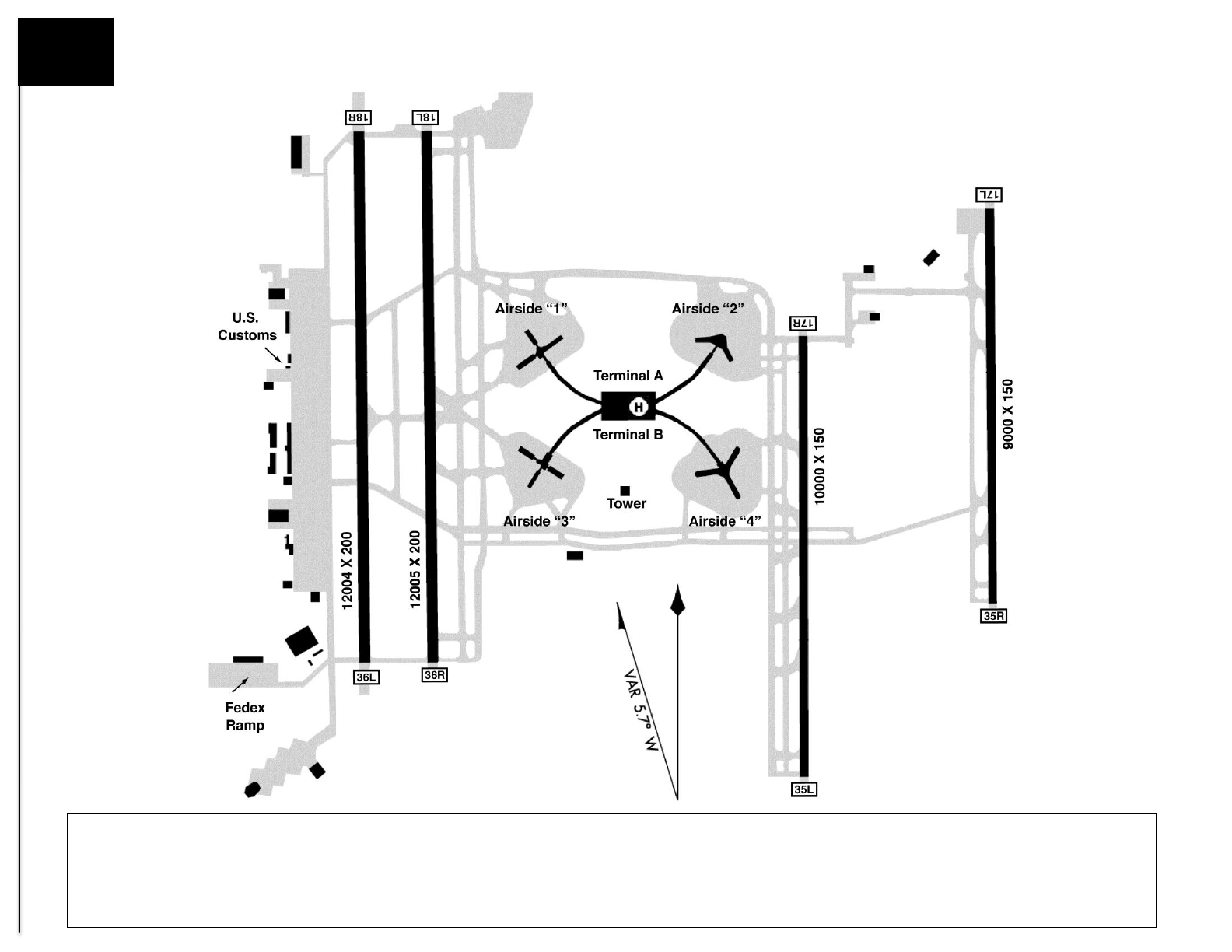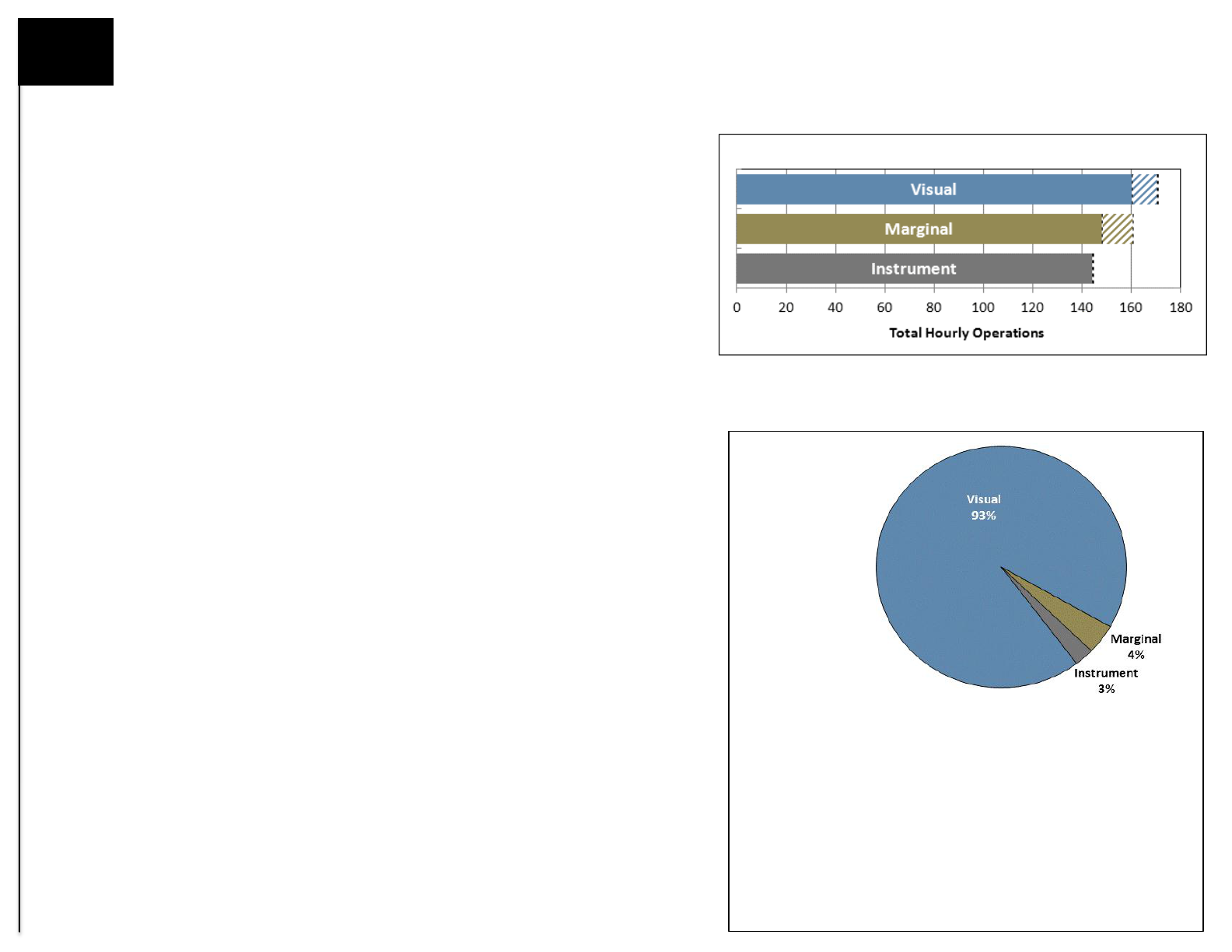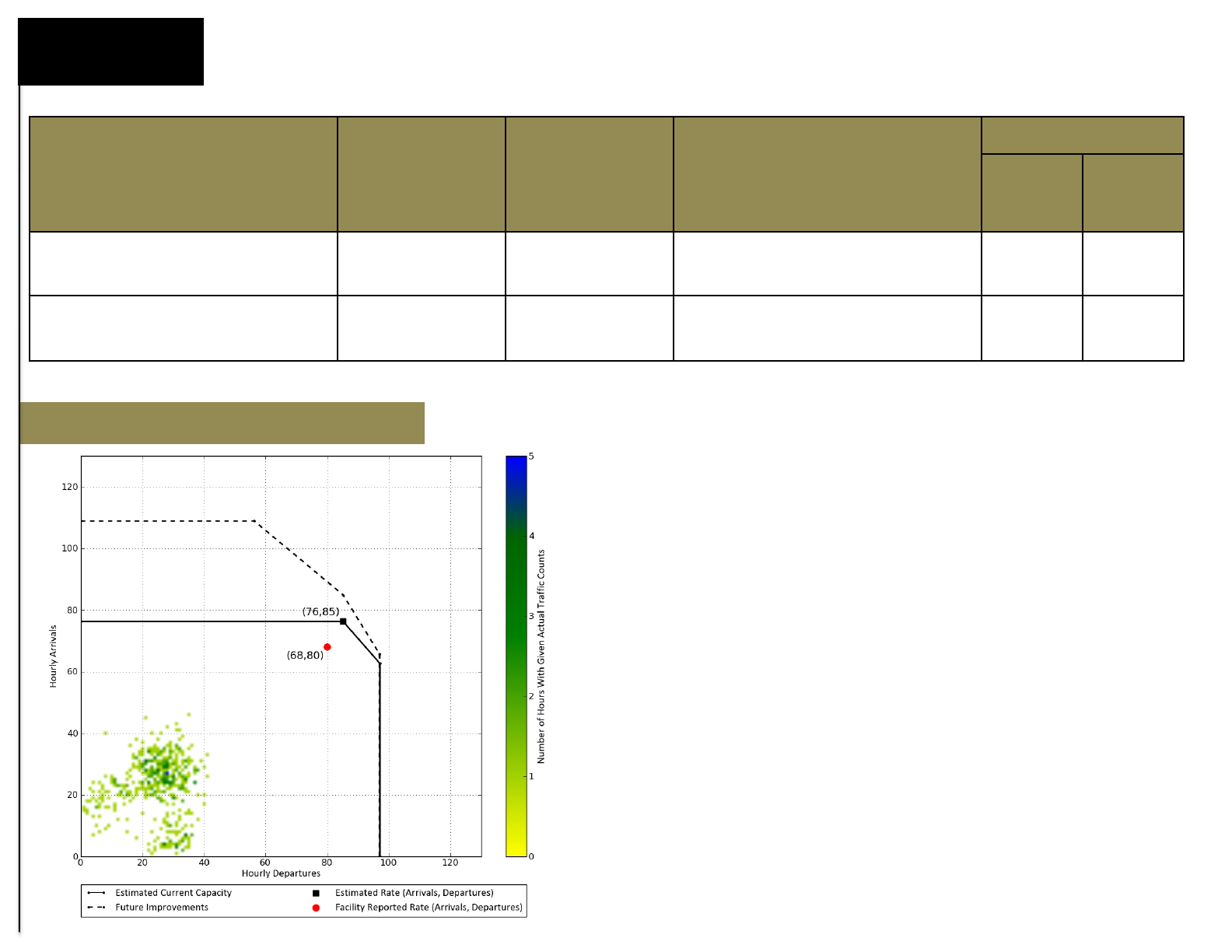
MCO
ORLANDO INTERNATIONAL
Airport capacity profile estimates were created using a standard set of performance characteristics and do not take into account non-runway constraints,
unless otherwise noted. The capacity estimates developed for this report are not intended to replace the results of any detailed analysis that would
precede an environmental, investment, or policy decision.
The list of Future Improvements and their expected effects on capacity does not imply FAA commitment to, or approval of, any item on the list.

MCO
DEFINITION
The capacity profile shows the hourly throughput that an airport is able to
sustain during periods of high demand, represented as the range between the
model-estimated capacity and the ATC facility reported rate (called rate). Each
weather condition has a unique capacity rate range.
The following charts compare actual hourly traffic with the estimated capacity
curves for MCO.
RECENT CAPACITY IMPROVEMENTS AT MCO
In 2003 MCO commissioned a new runway, 17L/35R, which is primarily used for
arrivals.
Implementation of Traffic Management Advisor (TMA) helps to improve the flow
of arrivals to the runways.
FUTURE IMPROVEMENTS AT MCO
Improved Parallel Runway Operations: Current spacing of Runway 17R/35L
allows for Triple Simultaneous Instrument Approaches, however this procedure
has not been implemented yet at MCO. It is unlikely that such approaches
would be implemented until required by traffic levels.
Additional information on these improvements may be found in this report
under “Future Operation Assumptions."
DATA SOURCES
Actual hourly MCO operations, weather and configuration data were obtained
from the FAA ASPM database, and represent operational hours from 7am to
11pm local time for all of Fiscal Years 2009 and 2010. Actual configuration usage
is determined by multiple operational factors, including weather conditions.
Facility reported rates were provided by ATC personnel at MCO.
Model-estimated rates are derived from operational information provided by
ATC.
ORLANDO INTERNATIONAL
ANNUAL WEATHER AT MCO:
VISUAL CONDITIONS:
Ceiling and visibility allow for visual approaches: at
least 2500 feet ceiling and 3 miles visibility
MARGINAL CONDITIONS:
Ceiling and visibility below visual approach minima
but better than Instrument conditions
INSTRUMENT CONDITIONS:
Ceiling and visibility below 1000 feet ceiling or
3 miles visibility
CURRENT OPERATIONS CAPACITY RATE RANGE

VISUAL
MCO Scenario
Arrival
Runways
Departure
Runways
Procedures
Hourly Rate
ATC
Facility
Reported
Model-
Estimated
C
URRENT OPERATIONS
17L, 18R 17R, 18L
Visual Approaches,
Visual Separation
160 171
F
UTURE IMPROVEMENTS
Improved Parallel Operations
17L, 17R, 18R
17R, 18L N/A 177
VISUAL WEATHER CONDITIONS
The capacity rate range in Visual conditions is currently
160-171 operations per hour.
MCO has two primary directional traffic flows. The
airport operates in variations of this configuration
approximately 59% of the time in Visual weather
conditions (totaling 55% annually).
Peak arrival capacity is estimated to increase as future
improvements are implemented.
ORLANDO INTERNATIONAL

MARGINAL WEATHER CONDITIONS
MARGINAL
MCO Scenario
Arrival
Runways
Departure
Runways
Procedures
Hourly Rate
ATC
Facility
Reported
Model-
Estimated
C
URRENT OPERATIONS
17L, 18R 17R, 18L
Instrument Approaches,
Visual Separation
148 161
F
UTURE IMPROVEMENTS
Improved Parallel Operations
17L, 17R, 18R
17R, 18L
Triple Simultaneous Instrument
Approaches, Visual Separation
N/A 165
The capacity rate range in Marginal conditions is
currently 148-161 operations per hour.
MCO has two primary directional traffic flows. The
airport operates in variations of this configuration
approximately 49% of the time in Marginal weather
conditions, (totaling 2% annually).
Reduced separation (2.5 NM) between arrivals is
authorized for instrument approaches to Runways 17L,
17R, and 18R at MCO.
Peak arrival capacity is estimated to increase as future
improvements are implemented.
ORLANDO INTERNATIONAL

INSTRUMENT WEATHER CONDITIONS
INSTRUMENT
ORLANDO INTERNATIONAL
MCO Scenario
Arrival
Runways
Departure
Runways
Procedures
Hourly Rate
ATC
Facility
Reported
Model-
Estimated
C
URRENT OPERATIONS
17L, 18R 17R, 18L
Instrument Approaches,
Radar Separation
144 144
F
UTURE IMPROVEMENTS
Improved Parallel Operations
17L, 17R, 18R
17R, 18L
Triple Simultaneous
Instrument
Approaches, Radar Separation
N/A 146
The capacity rate range in Instrument conditions is
currently 144 operations per hour.
MCO has two primary directional traffic flows. The
airport operates in variations of this configuration
approximately 44% of the time in Instrument weather
conditions (totaling 1% annually).
Reduced separation (2.5 NM) between arrivals is
authorized for instrument approaches to Runways 17L,
17R, and 18R at MCO.
Peak arrival capacity is estimated to increase as future
improvements are implemented.
